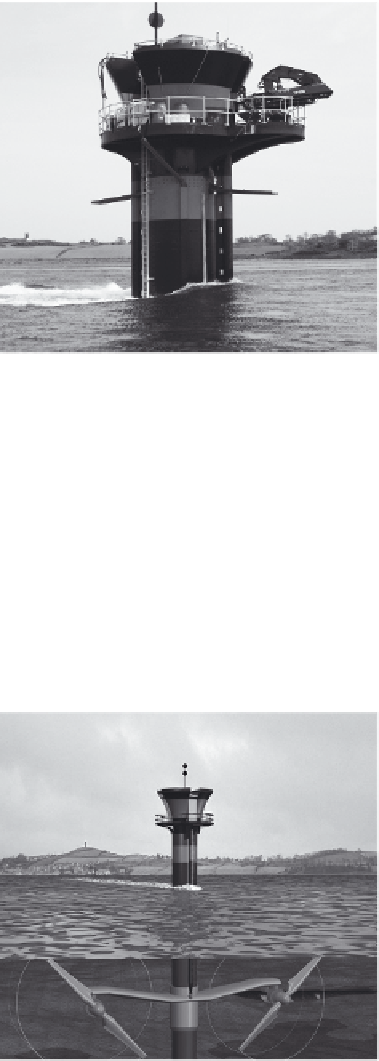Environmental Engineering Reference
In-Depth Information
Outside the UK, there are many
potential sites for tidal stream
power - the Strait of Gibraltar,
the Bosphorus, the Cook Strait in
New Zealand, the Bass and Torres
Straits in Australia. But don't
count on seeing anything from the
Mediterranean, where the tide is
minimal.
Wave power
Wave power is harder to capture
than tidal power, because waves
are a more chaotic form of motion
than tides or currents. The up,
down and rocking motion of waves
is more difficult to transform into
the rotational motion required for
electricity generation.
However, this was achieved
in the early 1970s by Professor
Stephen Salter of Edinburgh
University, with a device that
was dubbed Salter's Duck. It was
essentially composed of float-
ing containers, tied together and
loosely tethered to the sea floor.
The waves rocked these containers,
which converted the rocking into a
rotational motion that could spin
a generator. Development of this
was dropped when public funding
was cut in the 1980s. But the idea
has lived on in the work of some of
Professor Salter's Edinburgh pupils
in a company called Pelamis Wave
Power. Pelamis (the name of a sea
snake) has installed several of its
The Seagen tidal power turbine in Strangford
Lough, on Northern Ireland's north coast,
photographed above the water and depicted
below via an artist's impression demonstrating the
turbine's blades beneath.
Owned by Marine Current Turbines Ltd, Seagen
is the world's first large-scale commercial tidal
energy converter. Installed in April 2008, it was
connected to the national grid in July that year,
and generates 1.2 megawatts of electricity for
between 18 and 20 hours a day.
The turbines have a patented feature by which the
rotor blades can be pitched through 180 degrees.
This allows it to exploit water flowing in both
directions - as the tides come in and out of the
straits of the lough.
































































